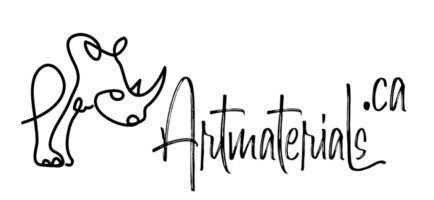What do you really need to know is that oil paints have a lot of fillers. It’s not possible to make thick paints without them, especially for some synthetic pigments (see other articles). Also, some mineral pigments due to their weight separate in oil paints and some agents needed to prevent this (read Why Oil Paints Separate? article).
The main reason why manufactures use fillers is increasing paint’s volume and reducing costs to maximize profits. For example, student grade paints may contain just 3 or 5 percent of pigment by volume (information taken from safety data sheets, when such details were disclosed). However, it is possible to make paints without fillers and achieve richest chroma.
Anyways, let’s take a look at fillers and what they do as well as how to recognize them in your paints.
Barium Sulfate (PW21)
And the champion here is Barium Sulfate (PW21). It’s one of the cheapest (10-25 times cheaper than pigments) and most efficient fillers as it increases opacity and adds some weight to a tube making it feel as if it has higher pigment load. Barium Sulfate is a white crystalline odourless solid, naturally occurring as the mineral barite. It’s insoluble in water, so it is safe to use. However, poorly made synthetic Barium Sulfate may have free soluble barium compounds as impurities that are very poisonous. Most paint have synthetic barium sulfate as a filler.
Aluminium Hydroxide (PW24)
For synthetic pigments Aluminium Hydroxide (PW24) is a very common filler. Sometimes it’s not even considered as a filler for such pigments as phthalocyanine blue or green, pyrrole red, and other synthetic pigments that are super strong and need a base.
Chalk (PW18)
Chalk (PW18) is also a very common filler here. However, this group is very broad that goes from actual chalk to marble dust. Marble dust brings viscosity to oil paints. As its oil absorption is very low (just 10 g per 100 g) it’s added a lot as a thickener and stabilizer.
Kaolin (PW19)
Kaolin, or PW19, is another common filler that is used a lot in oil paints, especially for titanium white and ultramarines. Chemically speaking, Kaolin is Aluminum Silicate Hydroxide, and more practically it’s just a clay. It has a lot of applications in different areas, including cosmetics. Most face masks, for example, have kaolin as a base. For art supplies, gouache paints as well as pastel, primers etc. may include kaoline as well. Generally, it’s a very safe ingredient, but doesn’t add any value to paints, mostly just increasing the volume of paints.




























Sana January 31, 2022 at 4:55 pm
It is a great product!!!!